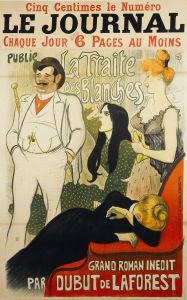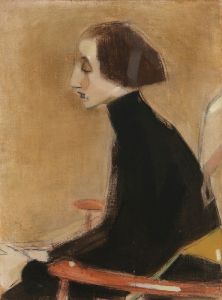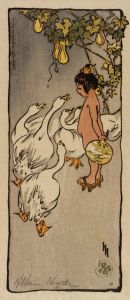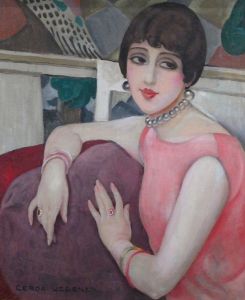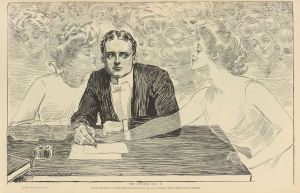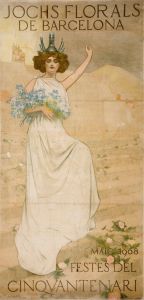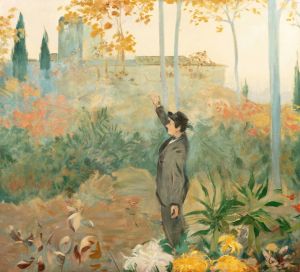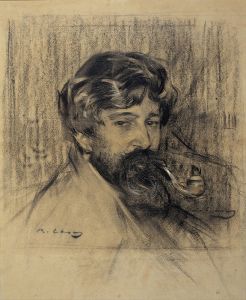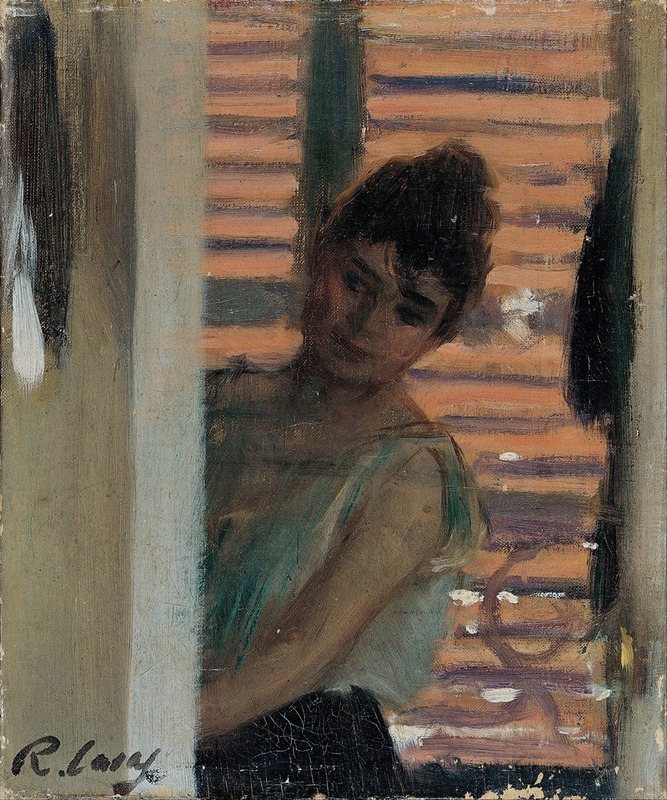
Dona Rera Persiana
A hand-painted replica of Ramón Casas’s masterpiece Dona Rera Persiana, meticulously crafted by professional artists to capture the true essence of the original. Each piece is created with museum-quality canvas and rare mineral pigments, carefully painted by experienced artists with delicate brushstrokes and rich, layered colors to perfectly recreate the texture of the original artwork. Unlike machine-printed reproductions, this hand-painted version brings the painting to life, infused with the artist’s emotions and skill in every stroke. Whether for personal collection or home decoration, it instantly elevates the artistic atmosphere of any space.
Ramón Casas i Carbó was a prominent Spanish painter and graphic artist, known for his significant contributions to the Catalan modernisme movement, which paralleled the broader European Art Nouveau style. Born in Barcelona in 1866, Casas became a leading figure in the cultural and artistic circles of his time, celebrated for his portraits, genre scenes, and depictions of social and political events.
One of Casas's notable works is "Dona Rera Persiana" (translated as "Woman Behind a Blind"), which exemplifies his skill in capturing intimate and contemplative moments. The painting reflects Casas's interest in portraying the subtleties of human expression and the interplay of light and shadow, a hallmark of his style. While specific details about the creation of "Dona Rera Persiana" are limited, the work is consistent with Casas's broader oeuvre, which often focused on the lives and experiences of women, capturing them in moments of introspection or everyday activity.
Casas was known for his ability to convey emotion and character through his portraits, often using a muted color palette and soft brushwork to create a sense of realism and immediacy. In "Dona Rera Persiana," the use of light filtering through the blinds adds a layer of complexity to the composition, highlighting the subject's features and creating a mood of quiet contemplation. This technique demonstrates Casas's mastery of light and his ability to use it to enhance the narrative quality of his paintings.
Throughout his career, Casas was deeply involved in the cultural life of Barcelona and was a central figure in the Els Quatre Gats café, a hub for artists and intellectuals. This venue was instrumental in the development of modernisme in Catalonia and provided a space for collaboration and exchange among artists, including the young Pablo Picasso. Casas's work, including "Dona Rera Persiana," reflects the innovative spirit of this movement, characterized by a blend of traditional techniques and modern themes.
Casas's influence extended beyond painting; he was also a skilled illustrator and poster artist, contributing to the visual culture of his time. His posters, often featuring elegant and dynamic compositions, played a significant role in the popularization of modernisme and helped to define the aesthetic of the era.
"Dona Rera Persiana" is a testament to Casas's ability to capture the essence of his subjects with sensitivity and nuance. While the painting itself may not be as widely recognized as some of his other works, it remains an important example of his artistic vision and his contribution to the modernisme movement. Casas's legacy is preserved in numerous collections and museums, including the Museu Nacional d'Art de Catalunya in Barcelona, where many of his works continue to be appreciated by audiences today.
In summary, Ramón Casas's "Dona Rera Persiana" is a reflection of his artistic prowess and his role in the cultural and artistic developments of late 19th and early 20th century Spain. Through his careful attention to detail and his innovative use of light, Casas created works that continue to resonate with viewers, offering a glimpse into the lives and emotions of his subjects.





